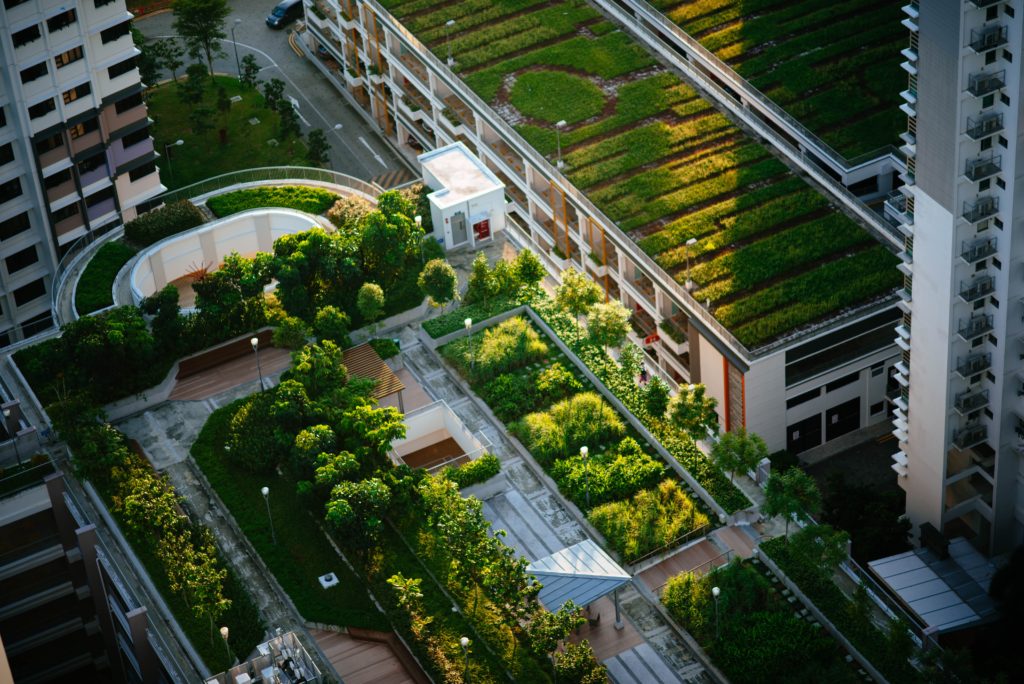Sustainable roofs are a great way to reduce the amount of energy your home uses to stay cool during the summer. There are a variety of sustainable roofing technologies available that can help keep your home comfortable and cool without costing a lot of money. This blog post will discuss some of the most popular cool roofing technologies and how they work.
Green Roofs
One of the most popular sustainable roofing technologies is the green roof. Green roofs are vegetated roofs that have a layer of soil and plants. They are also sometimes called living roofs. Green roofs can be either intensive or extensive, depending on the type of vegetation used.
- Extensive green roofs are typically found in colder climates and have a shallow layer of soil and sedum, grasses, or mosses.
- Intensive green roofs are found in warmer climates and have a deeper layer of soil that can support shrubs and small trees.
A Bucks County roofing company notes that green roofs provide several benefits, including:
- Improved energy efficiency: Green roofs can help to regulate the temperature of your home, keeping it cooler in the summer and warmer in the winter.
- Reduced stormwater runoff: Green roofs can help to reduce stormwater runoff by up to 75%.
- Enhanced air quality: Plants can help to filter pollutants out of the air, improving air quality.
- Increased lifespan of your roof: A green roof can add an extra layer of protection to your roof, helping to extend its lifespan.
If you’re interested in installing a green roof, it’s important to work with an experienced roofing contractor who has experience with this type of installation. Green roofs can be complex, and it’s important to make sure that they are installed correctly.

Cool Roofing Membranes
Cool roof membranes are another great option for homeowners who want to make their roofing sustainable. Cool roofs are designed to reflect more sunlight and absorb less heat than traditional roofs. This can help keep your home cooler in the summer months and can also reduce your energy costs. There are a variety of cool roof membranes on the market, including those made from recycled materials.
Some of the popular membranes used in cool roofs are white TPO, PVC, and EPDM. These materials are all reflective and can help keep your home cooler. Recycled rubber or plastic can also be a cost-effective option. The right roofing option for your home will depend on factors like your climate and budget.
Reflective Coatings
Applying a reflective coating to your home’s roof is one of the most effective ways to reduce heat gain and keep your home cooler during the summer months. Reflective coatings reflect sunlight away from your roof, reducing the amount of heat that is absorbed by your home. Application is done by painting or applying a special coat.
There are a variety of reflective coatings available on the market, each with its own set of benefits. These include cool roof coatings that contain reflective pigments that reflect sunlight away from your roof. They are available in a variety of colors, including white, silver, and light gray. Cool roof tiles and shingles are also available.
Roof Insulation
Roof insulation has always been an important part of sustainable roofing technology, but with the advent of better materials and methods, it has become even more effective. One of the most popular options for roof insulation is spray foam insulation. This type of insulation is applied directly to the roof deck and then expands to fill any voids or cracks.
It forms a tight seal that helps to keep heat in during the winter and out during the summer. Another popular option for roof insulation is blown-in cellulose insulation. This type of insulation is made from recycled paper products and is blown into the attic space. It is an excellent choice for sustainable roofing because it is environmentally friendly and effective at insulating your home.
Compare Your Options Carefully
When selecting a sustainable roofing technology for your home, there are many factors to consider. Each option has its own set of pros and cons, so be sure to compare your options carefully before deciding. If you have any questions, don’t hesitate to reach out to a qualified roofing professional for more information.






